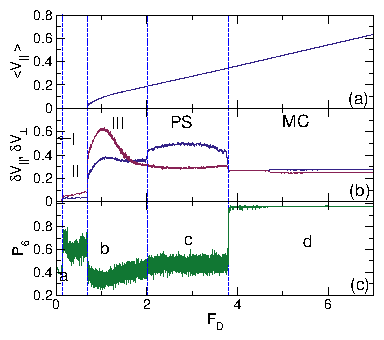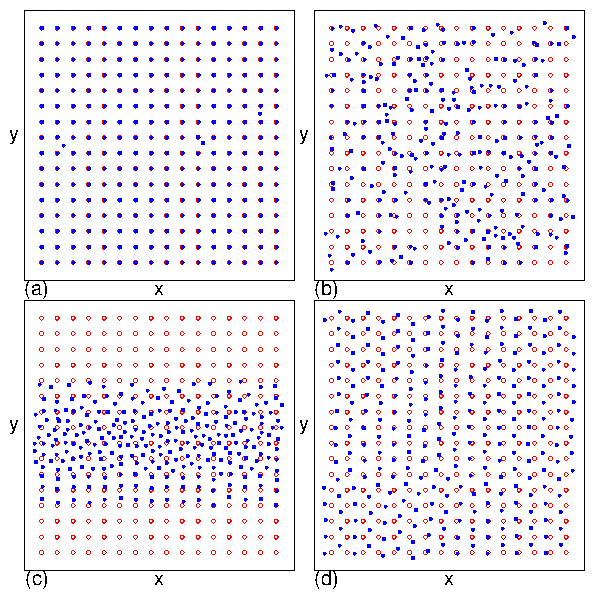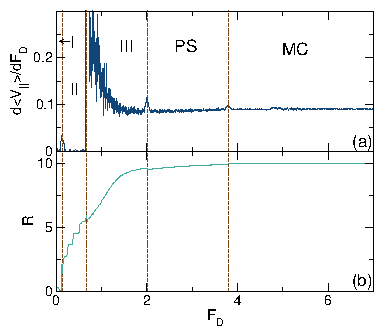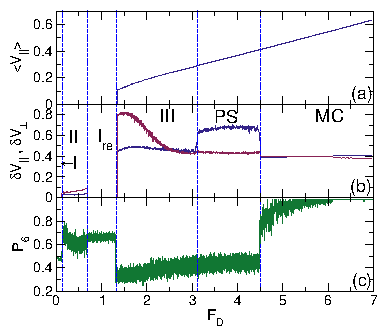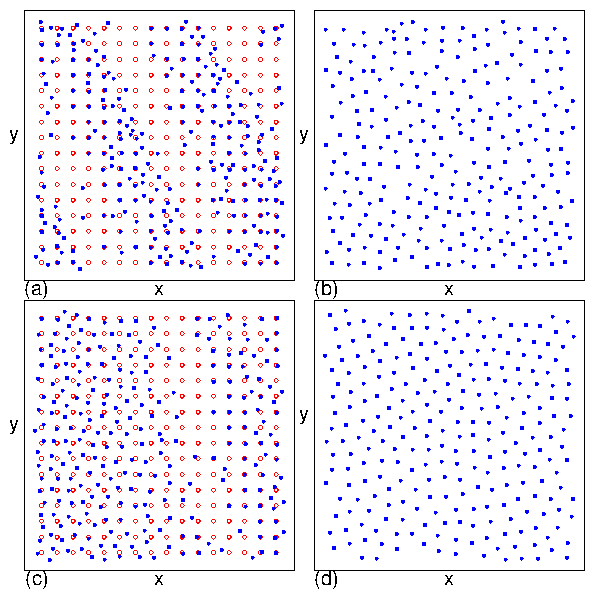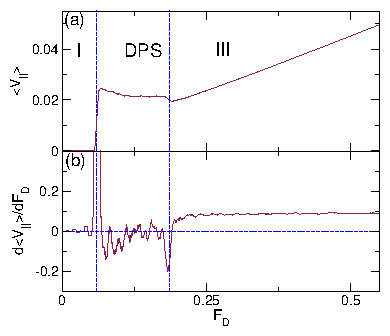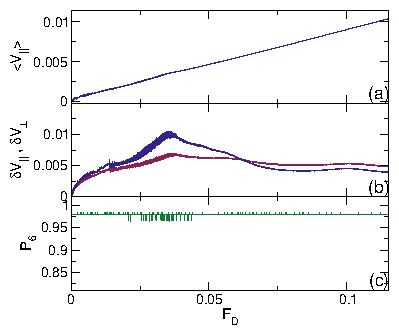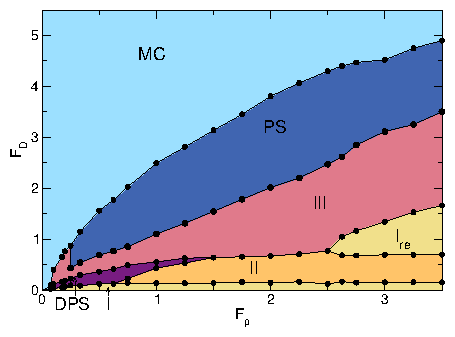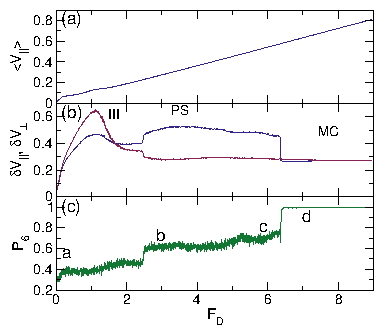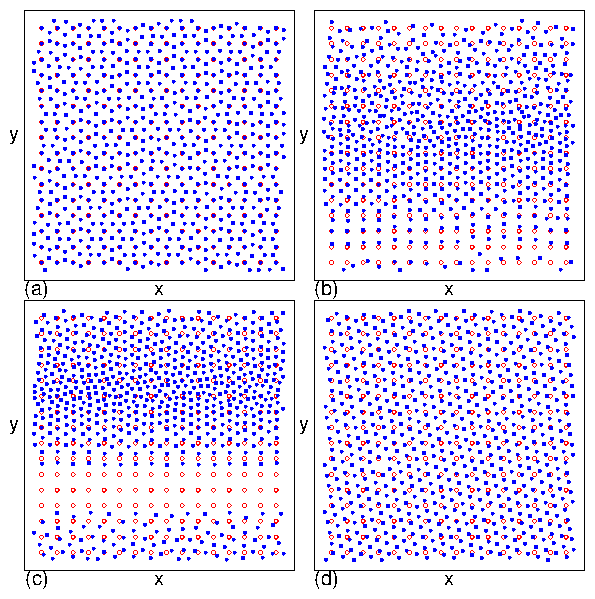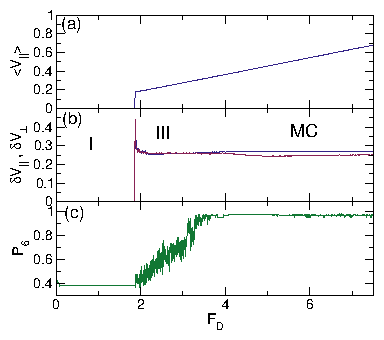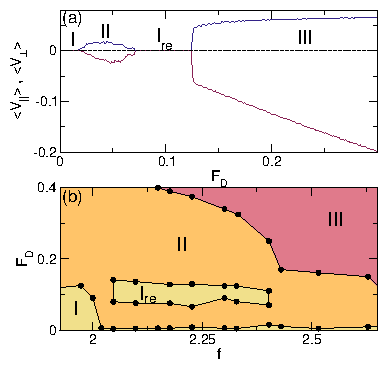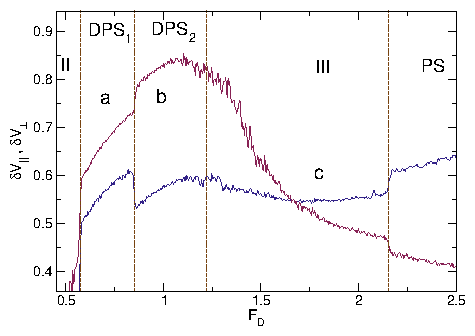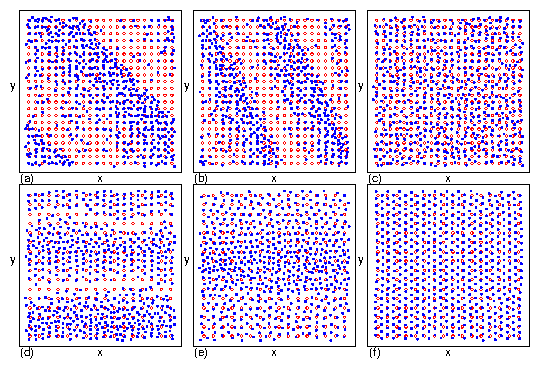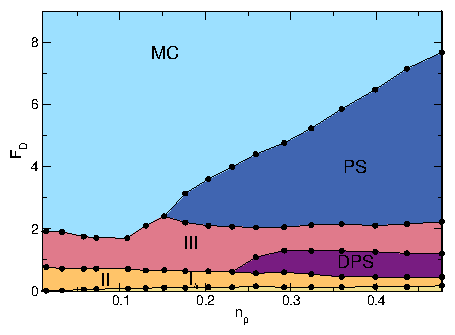| Name | Label | Characteristic features |
| No skyrmions moving: | | |
| Pinned | I | Pinned square lattice containing interstitials |
| Reentrant Pinned | Ire | Reentrantly pinned square lattice containing interstitials |
| Pinned Commensurate | PC | Same as Phase I (Pinned) |
| Incommensurate Floating Solid | IC | Pinned triangular lattice floating over the substrate |
| Moving and pinned skyrmions coexist: | | |
| Interstitial Flow | II | Motion of only interstitial skyrmions between pinning rows |
| Disordered Flow | III | Individual skyrmions repeatedly pin and depin |
| Diagonal Phase Separated | DPS | Moving skyrmions clump into dense stripes at angle to drive |
| Diagonal Phase Separated subphase 1 | DPS1 | Moving skyrmion stripes aligned ∼ 45° from drive |
| Diagonal Phase Separated subphase 2 | DPS2 | Moving skyrmion stripes aligned ∼ 67° from drive |
| All skyrmions moving: | | |
| Phase Separated | PS | Skyrmions clump into dense stripes aligned with drive |
| Moving Crystal | MC | Moving triangular crystal containing grain boundaries |
